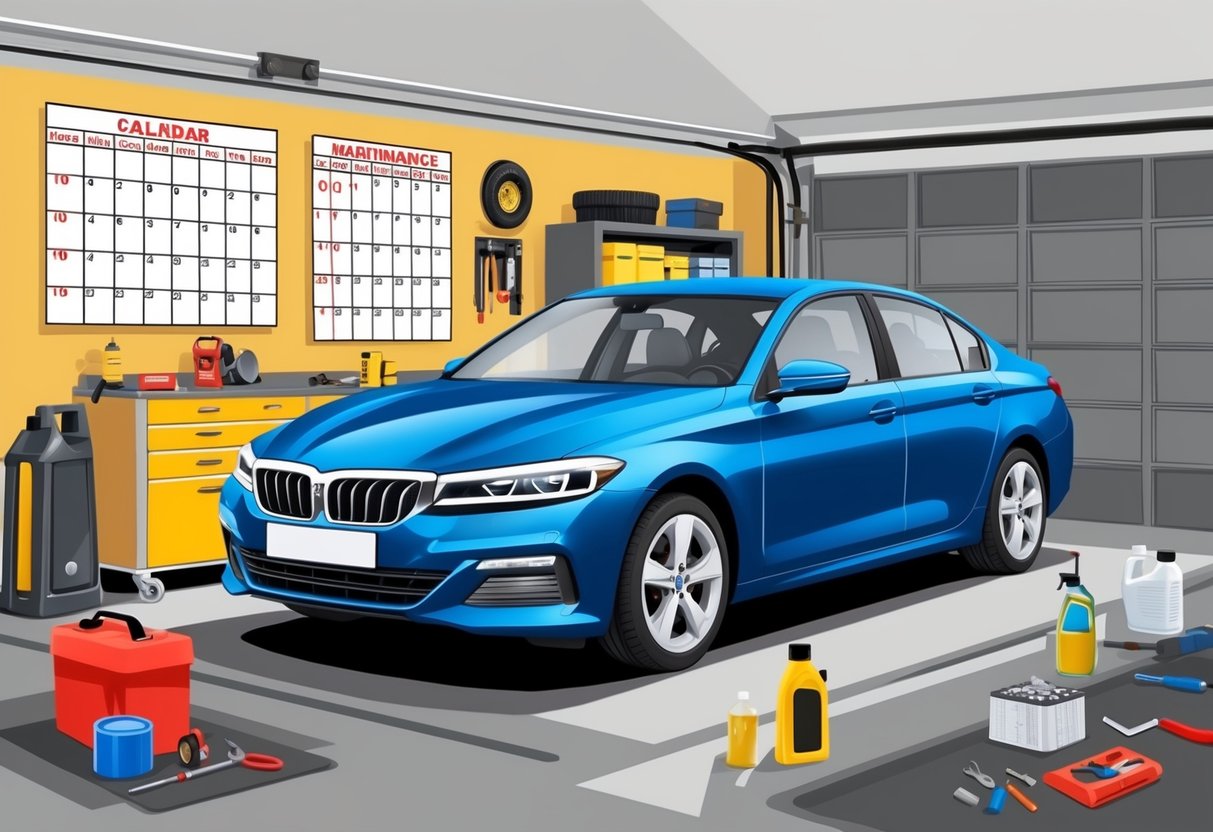
Creating a car maintenance schedule is one of the most effective ways to save money and extend the life of any vehicle.
A simple and consistent routine of maintenance tasks—like checking fluid levels, replacing filters, and inspecting brakes—can catch small issues before they become expensive repairs.
This proactive approach keeps a car running smoothly and helps drivers avoid unexpected breakdowns and costly emergency fixes.
Many people believe car maintenance is complicated or only for experts, but keeping a vehicle in top shape can be straightforward with the right plan.
By following a basic schedule and performing regular checks, car owners can take control of their vehicle’s health and minimize costs over time, as seen in guides like the ultimate vehicle maintenance checklist.
Skipping routine service may seem like a way to save a few dollars, but it often leads to larger bills down the road.
Building a simple car maintenance schedule ensures that drivers stay ahead of wear-and-tear, protect their investment, and enjoy safer travels without overspending.
Why Regular Car Maintenance Saves Money
Consistent auto maintenance is one of the most effective strategies for lowering the total cost of vehicle ownership.
Timely preventive maintenance routines help drivers reduce large, unexpected expenses by addressing issues early, boost efficiency, and maintain resale value.
Reducing Unexpected Repairs
Sticking to a regular vehicle maintenance routine—such as oil changes, brake inspections, and fluid checks—can drastically lower the risk of sudden, costly failures.
Many major repairs, such as engine or transmission replacements, often happen when small problems are ignored and develop into serious issues.
Simple services like replacing worn brake pads or maintaining correct tire pressure can prevent breakdowns that leave drivers stranded and facing high emergency bills.
By catching problems early during scheduled checkups, car owners are more likely to fix minor faults before they escalate.
A habit of preventive maintenance enables technicians to spot worn-out belts, hoses, and filters ahead of time.
According to service experts, this approach is the best way to avoid expensive, last-minute repairs that drain budgets.
Enhancing Fuel Efficiency
Routine vehicle maintenance directly affects fuel efficiency.
Neglected air filters, misaligned wheels, and low tire pressure all force the engine to work harder, using more fuel in daily driving.
Changing engine oil and replacing spark plugs at recommended intervals contributes to smoother performance and optimal mileage.
A well-maintained car burns less fuel for the same distance, with cleaner fuel injectors and efficient combustion.
Regular tune-ups and inspections keep the engine running as intended.
Following a basic maintenance schedule, like those outlined in most manufacturer recommendations, means drivers fill up less often, saving money throughout the year.
Preserving Vehicle Value
A record of consistent vehicle maintenance supports higher resale or trade-in value.
Buyers are more willing to pay a premium for used cars with documented history, since it signals the car is less likely to have hidden issues from neglect.
Routine tasks such as washing, waxing, and checking fluids help minimize rust, corrosion, and paint damage.
Keeping up with scheduled services, as advised in routine maintenance guides, maintains the mechanical health and appearance of the car.
Depreciation slows when a car is mechanically sound and visually well-kept.
This means less money is lost over time, leaving owners with more to put toward a new vehicle or to save.
Essential Components of a Maintenance Schedule
A well-organized car maintenance schedule should take into account recommended service intervals, the specific directions found in the owner’s manual, and a repeatable plan for tracking past and future maintenance.
By covering these areas, car owners can maximize savings, improve vehicle reliability, and reduce the risk of unexpected repairs.
Key Maintenance Intervals
Setting up a routine maintenance plan begins by understanding essential service intervals.
Oil changes are typically needed every 3,000 to 5,000 miles, while tire rotations generally happen every 6,000 to 8,000 miles.
Brake system inspections and coolant flushes often follow an annual or biannual schedule.
Drivers should also remember to check air filters, battery health, and light bulbs monthly.
Transmission fluid and power steering fluid usually require less frequent checks but are still important to include.
Using a car maintenance checklist helps keep all these tasks on track.
Common Routine Maintenance Checklist
| Task | Frequency |
|---|---|
| Oil Change | 3,000–5,000 miles |
| Tire Rotation | 6,000–8,000 miles |
| Brake Inspection | Every 12 months |
| Coolant Flush | Every 2–3 years |
| Air Filter Change | Every 12,000–15,000 miles |
| Fluid Checks | Every 1–3 months |
Performing tasks at these intervals extends vehicle life and minimizes costly repairs.
Owner’s Manual Recommendations
Every vehicle’s owner’s manual provides manufacturer-specific guidance on routine maintenance.
This document includes details about the type of fluids to use, recommended service timelines, and component-specific advice.
Adhering to these guidelines helps align with factory recommendations and warranty requirements.
It’s important to look for information like the correct oil viscosity, suitable tire pressure, and brake fluid type.
The manual typically contains a comprehensive chart or table for quick reference.
Following the maintenance schedule outlined in the owner’s manual ensures that no crucial service is overlooked.
Owners should make note of updates if the manual refers to online resources or supplements.
Reading through the recommended maintenance items section saves time and prevents premature part failure.